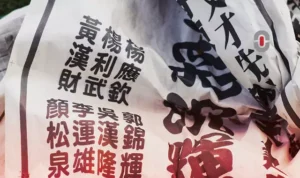China has one of the world’s biggest consumer bases and a crucial role in the world’s economy as a hub for manufacturing and technology. That’s why translating user manuals into Mandarin is a very important task. Translating user manuals into Mandarin involves adapting technical jargon to align not only with the practical context of Mandarin speakers but also legal compliances and even cultural aspects. Effective user manual translation ensures that the manuals are accurate and user-friendly and enhance the user experience. User manuals can improve product accessibility and customer satisfaction, making them a key into driving market success in Mandarin-speaking regions.
Types of Industries Benefiting from User Manual Translations
The different types of user manuals are tailored to a specific audience and purpose to serve the industry they represent. Accurate translation of user manuals is essential across various industries.
- Electronics: Technical manuals for smartphones, televisions, cameras, and other devices require precise translations to ensure users understand specific terminology and instructions.
- Healthcare: User manuals for medical equipment are crucial for healthcare professionals to safely and effectively operate devices.
- Automotive: Automotive manuals provide essential guidance on vehicle maintenance, safety, and troubleshooting, making accurate translation vital for car owners worldwide.
- Software: Software manuals instruct users on how to use and operate computer programs, demanding clear and accurate translations.
- Home Appliances: Manuals for home appliances offer directions for installation, use, and maintenance, necessitating precise translation for user comprehension.
All these translation and localization efforts ensure that the end-users can clearly understand and use the provided information. Additionally, localized translations can enhance user experience by incorporating cultural nuances and addressing region-specific regulations, further ensuring clarity and compliance.
Preparation for User Manual Translation in Mandarin
Before the translation process starts, it’s best to prepare several steps to ensure the translation is accurate, consistent, and user-friendly. The first step is gathering the relevant materials, like the original user manual, any previous versions, technical specifications, and reference documents. This will provide you with a solid foundation for understanding the product and its functionalities. You can also create a glossary of all items.
Create a Glossary
Creating a dictionary of key terms will also be beneficial when translating user manuals. The glossary will provide you with specific technical terms, ensuring consistency throughout the text. If you work in a team, you can collaborate to create the glossary, ensuring accurate and uniform use of terminology. This will help customers understand and recognize the technical jargon across different sections of the manual, improving the overall quality of the translation.
Translation Process
Familiarize Yourself with the product
Before beginning the translation, its best to familiarize yourself with the product and its functionalities. Understanding the product in detail will allow you to accurately convey its features, operations, and instructions in Mandarin. By understanding the product well, you can avoid misinterpretations and provide the reader with clear, precise information that helps effectively operate the product. Familiarizing yourself with the product is a crucial step for producing a high-quality translation that meets the needs of end users.
Text Analysis
Text analysis is a key step in the translation process, involving a thorough examination of the source text to ensure accurate and effective translation. This process begins with identifying the key terms, such as technical jargon, product-specific language, and industry terminology that require precise translation.
Understanding the text structure is equally important, as it helps in maintaining the logical flow and coherence of the translated manual. You can begin by breaking down the text into its fundamental components to ensure that the translated text preserves the original meaning of the text.
Effective text analysis facilitates the creation of a detailed and accurate glossary, aids in recognizing potential translation challenges, and ultimately contributes to a higher quality, user-friendly manual.
Cultural Adaptation
Considering cultural differences is essential when translating user manuals into Mandarin, as some cultural nuances can impact how phrases or instructions are understood by Chinese users. Mandarin has unique idiomatic expressions, cultural references, and communication styles that differ from English, for example. Certain English expressions may even sound confusing or inappropriate in Mandarin. For example, English user manuals often use a direct and imperative tone, like “Do not press this button.” In Mandarin, a softer, more respectful tone might be preferred, such as “请勿按此按钮” (Please do not press this button), which aligns with the politeness expected in Chinese communication.
By taking these cultural nuances into account, translators can create a manual that effectively communicates with the target audience, enhancing user comprehension and overall satisfaction in the Mandarin-speaking market.
Best Practices in User Manual Translation in Mandarin
 Here are some of the best practices for user manual translation into Mandarin:
Here are some of the best practices for user manual translation into Mandarin:
- Maintain Consistent Formatting
- Keep the layout and formatting consistent with the original manual to aid user navigation.
- Ensure that translated text fits well within the design and structure of the manual. Maintaining consistency throughout the manual is crucial for clarity and comprehension. Using consistent terminology and formatting ensures a cohesive end product that is easy to follow.
- Quality Control
- Proofread and edit the translated text to check for accuracy and consistency.
- Perform linguistic and functional testing to ensure the manual is user-friendly and error-free.
- Thorough proofreading and reviewing by native speakers of the target language are essential steps to guaranteeing an error-free final product that meets high-quality standards.
- User Testing
- Have native Mandarin speakers review and test the translated manual. Gather feedback to identify and correct any issues or ambiguities.
- Simplify Language
- Use clear, concise language to avoid complex sentence structures and excessive jargon.
- Ensure that instructions are straightforward and easy to follow.
Using Professional Mandarin Translation Services
While a lot of companies use special software to translate user manuals, professional Mandarin translation services for user manuals are highly recommended. Mandarin language experts have not only linguistic skill but also cultural knowledge necessary to convey technical information and nuances specific to Mandarin. Professional translators can ensure consistency in terminology, and adhere to local regulatory requirements to maintain high-quality standards. Professional services also offer quality control processes, including proofreading and editing, to avoid errors that could lead to user misunderstandings or product misuse. By employing professional translators, companies can enhance the clarity and usability of their manuals, ultimately improving customer satisfaction and reducing support costs.
Legal Compliance
One of the most important things professionals should look out for is legal compliance for user manual translations. Legal compliance means that the products meet all regulatory standards by Chinese authorities. User manuals must adhere to laws and regulations specific to the industry, such as the Product Quality Law and the Law on the Protection of Consumer Rights and Interests, which require clear, accurate instructions and safety information. Different types of products require different compliance. For electronics and IT products, user manuals should meet the Ministry of Industry and Information Technology (MIIT) regulations, for example. Professionals should thoroughly research which guidelines they should follow when doing user manual translation into Mandarin to ensure that they follow the industry-specific regulations.
Translating user manuals into Mandarin goes beyond words—it’s about capturing cultural nuances, ensuring legal compliance, and achieving technical precision. High-quality translations boost user experience and customer loyalty. By embracing best practices and expert services, companies can craft manuals that help navigating the complexities of the Chinese market, ultimately supporting a company’s global growth and reputation.
